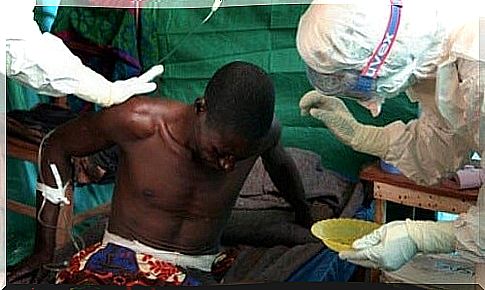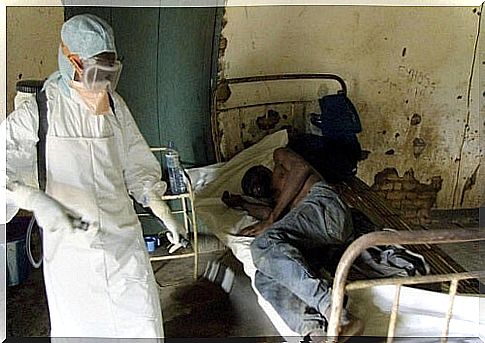Ebola Virus – What Should You Know About It?

The incubation period for the Ebola virus from infection to the onset of symptoms is 2 to 21 days. In recent months, there has been a lot of media coverage about a disease called Ebola hemorrhagic fever. It is not a new disease. It was first encountered in 1976 during its deadly epidemic.
Do you know this virus? If not, don’t worry. Below you will find the most important information about it: where it comes from, what symptoms it causes, etc.
Ebola virus – what is it?
Ebola hemorrhagic fever is an infectious disease caused by the Ebola virus in humans and primates. The virus is named after the African Ebola River in Zaire.
The Ebola virus belongs to the RNA monolithic family called Filoviridae. It is worth noting that there are five serotypes of the Ebola virus: Ebola-Zaire, Ebola-Ivory Coast, Ebola-Sudan, Ebola-Bundibugyo and Ebola-Reston. The latter may be pathogenic to non-human primates.

The spread of the virus
The mortality rate from Ebola infection is very high because it acts at an amazing speed and the sites of infection can be far apart.
Infection can also occur through direct contact with contaminated medical equipment, such as syringes. It is also worth mentioning a nosocomial infection, which means that you can get infected with this virus in a health center or in a hospital.
Recently, there was a lot of media coverage of such cases. Many people became infected with this deadly virus in health centers on the African continent. This is because patients are admitted and examined without the use of appropriate protective masks, gowns or special gloves.

Ebola virus – what should you know about it?
Hemorrhagic fever is a disease that should be feared. Why? Because it is relatively difficult to detect, it is usually successful when it is too late.
Below is a series of useful information that you should remember.
Mortality for Ebola is 90%
Since the first contact with Ebola, there have been over twenty more epidemiological outbreaks and several isolated cases of infection with this virus. In some cases, the death rate has been as high as around 90%.
The virus can remain active in male sperm
The World Health Organization (WHO) confirms that men cured of hemorrhagic fever can transmit the virus through semen for up to 7 weeks after recovery.
Symptoms of infection
The earliest symptoms of Ebola are fever, extreme tiredness, muscle aches, headache, and sore throat. This is followed by vomiting, diarrhea, rash, renal failure, and in many cases also external and internal haemorrhages.
If you notice any of these symptoms, see a doctor immediately and, if possible, avoid contact with other people to prevent the spread of the virus.
Virus incubation period
It is estimated that the incubation period of the virus from infection to the first symptoms of the disease lasts from 2 to 21 days. Due to the similarity to the symptoms of other diseases, the only way to make a correct diagnosis is to perform special tests and laboratory analyzes.
Prevention and treatment
There is currently no vaccine against this virus on the market. The numerous studies and various tests give hope – for now, however, they are at the purely experimental stage.
In terms of treatment, however, no specific drug to combat this disease has yet been invented. Currently, the best solution is the oral administration of electrolyte solutions or fluids by the intravenous method.









